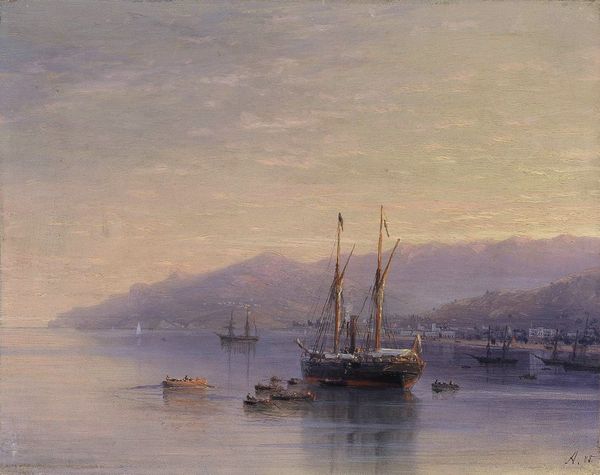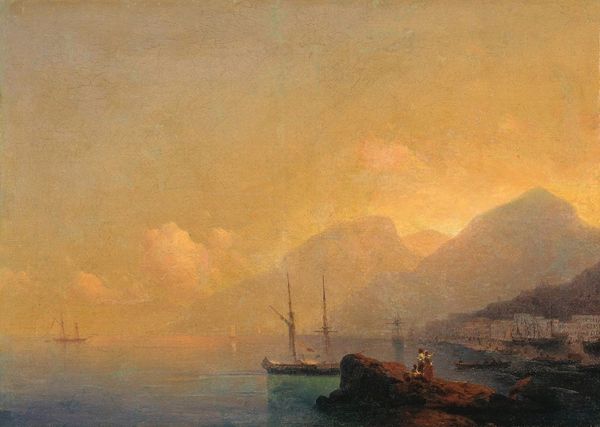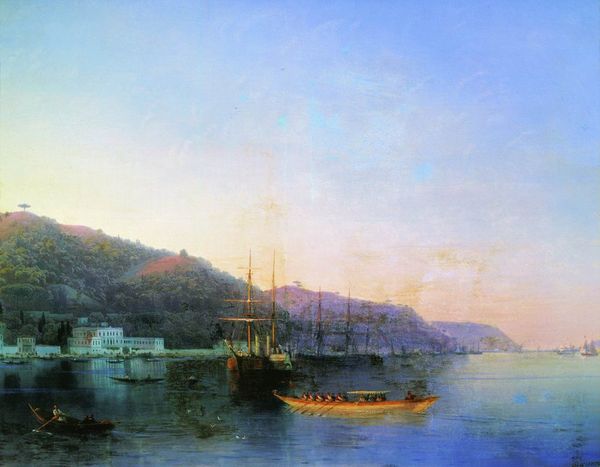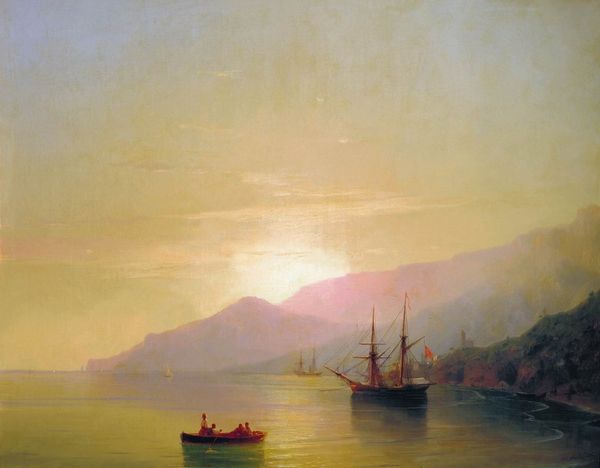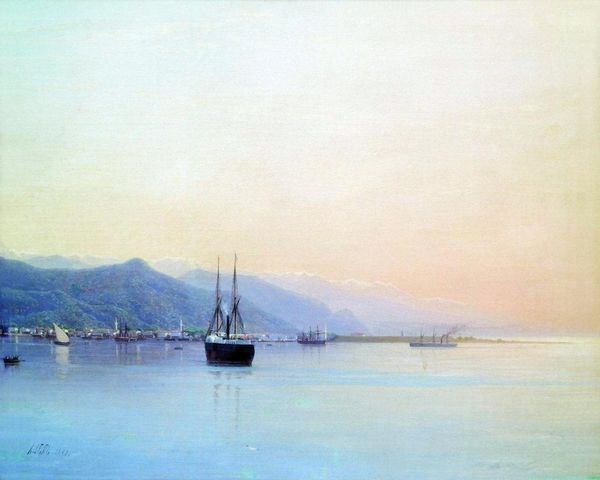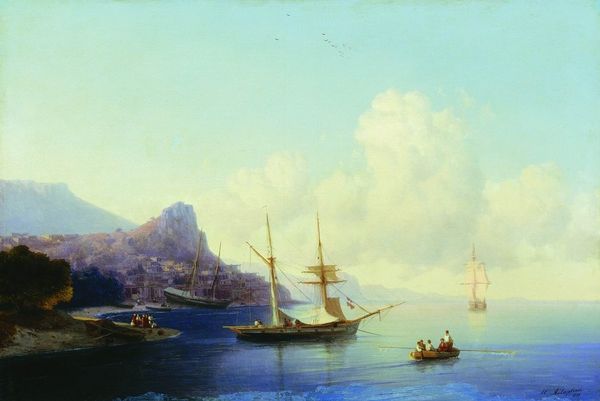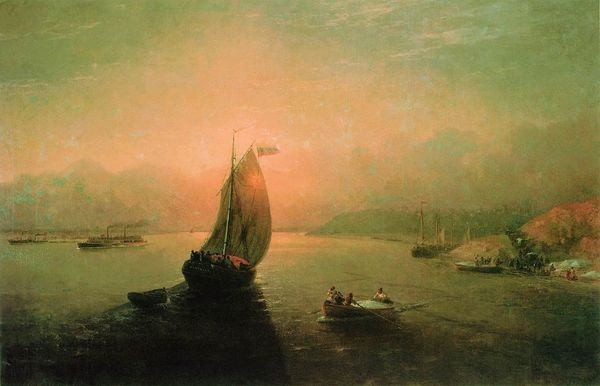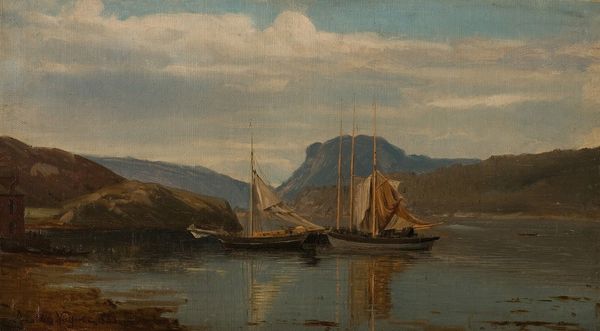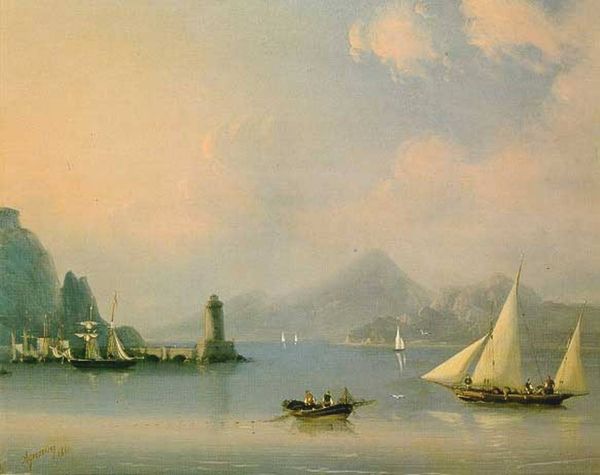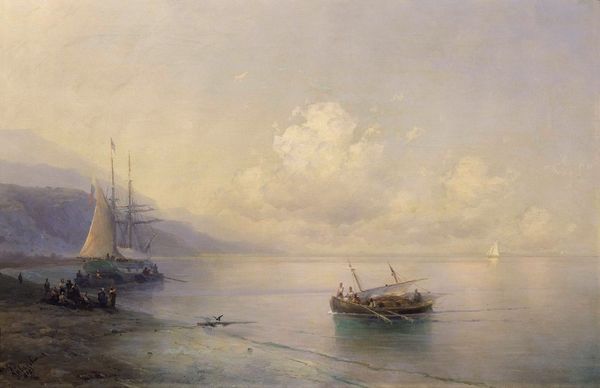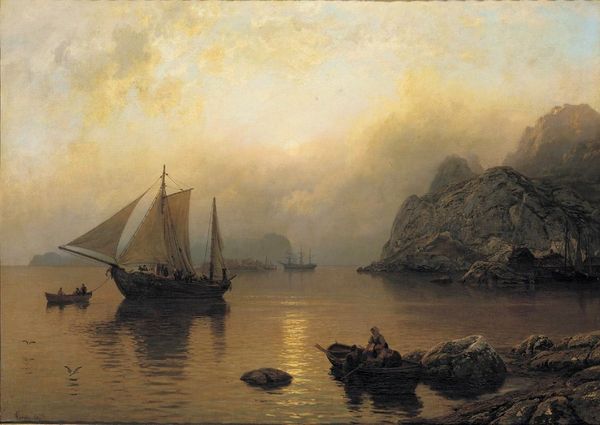
Copyright: Public domain
Editor: This is Ivan Aivazovsky's "Crimean Coast," painted in 1886, using oil. It’s so serene! The stillness of the water and the soft colours create a very peaceful atmosphere. What do you see in this piece that I might be missing? Curator: Aivazovsky was a master of light, and light is symbolic here. It is emanating from the clouds almost like divine light, touching the scene with grace. See how it casts an ethereal glow on the water and highlights the distant ships? Think about what ships have represented over time – journeys, trade, connection, even escape. And how this connected to Russia’s aspirations during this time period. Editor: That makes sense. I was so focused on the calm surface, I missed that the ships could represent so much more than just…ships! So, the location being the Crimean coast, does that have any particular significance? Curator: Absolutely! Consider the historical context. The Crimean Peninsula held strategic importance for Russia, providing access to warm-water ports. Aivazovsky, deeply patriotic, often depicted Crimean landscapes to evoke feelings of national pride and connection to this vital region. Look at how he's composed the scene – the land almost embraces the sea. Is it inviting or guarding? Editor: I never considered it that way, but I think it's both inviting and guarding. It really adds a layer of complexity to something that I initially saw as very simple. Curator: Indeed. Aivazovsky subtly layered meaning within his atmospheric seascapes. He gives us the external scene while inviting reflection on its internal echoes. Editor: I will never look at a seascape the same way. I had no idea so much cultural meaning could be captured in what I thought was a beautiful, but straightforward, landscape painting.
Comments
No comments
Be the first to comment and join the conversation on the ultimate creative platform.
